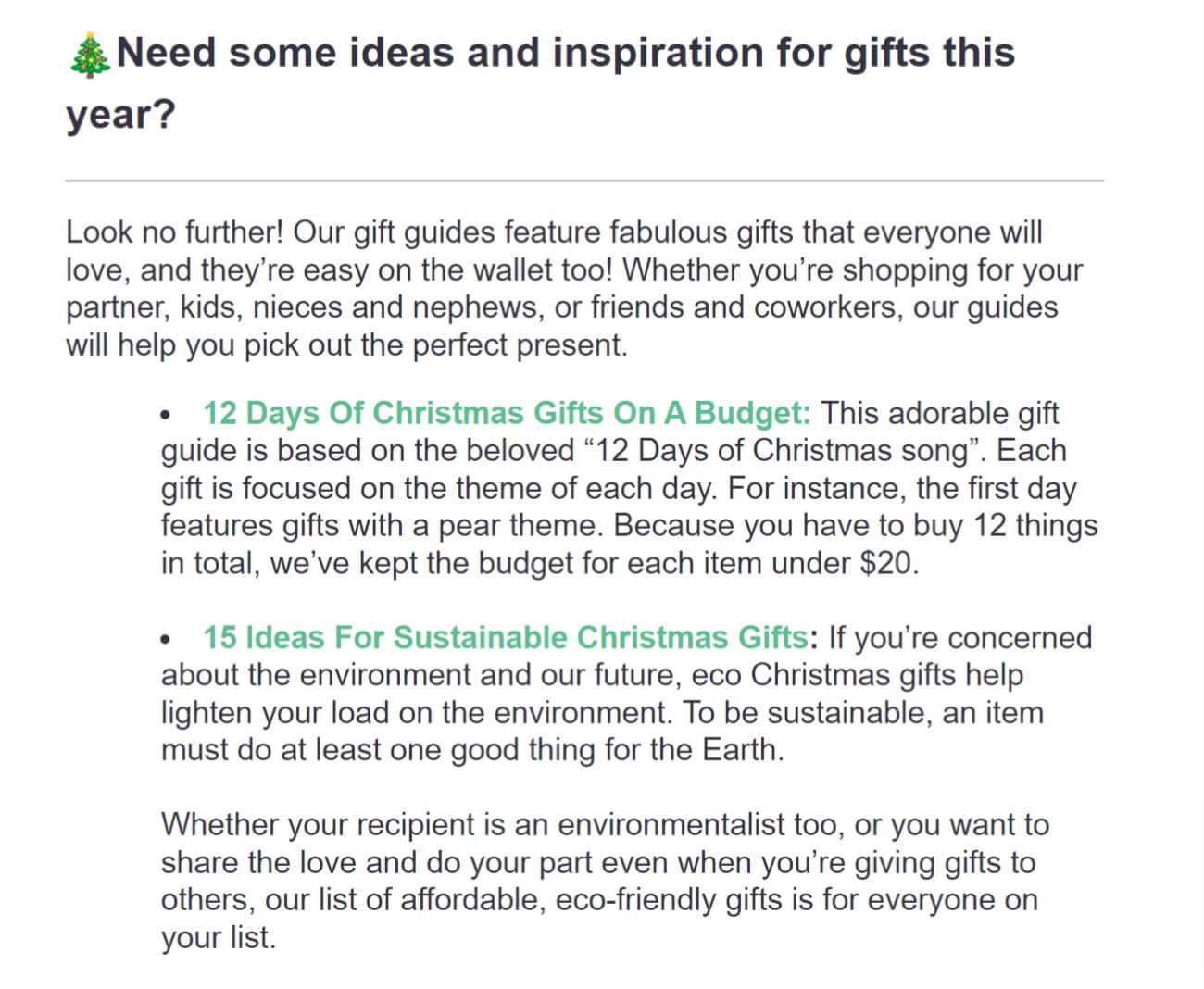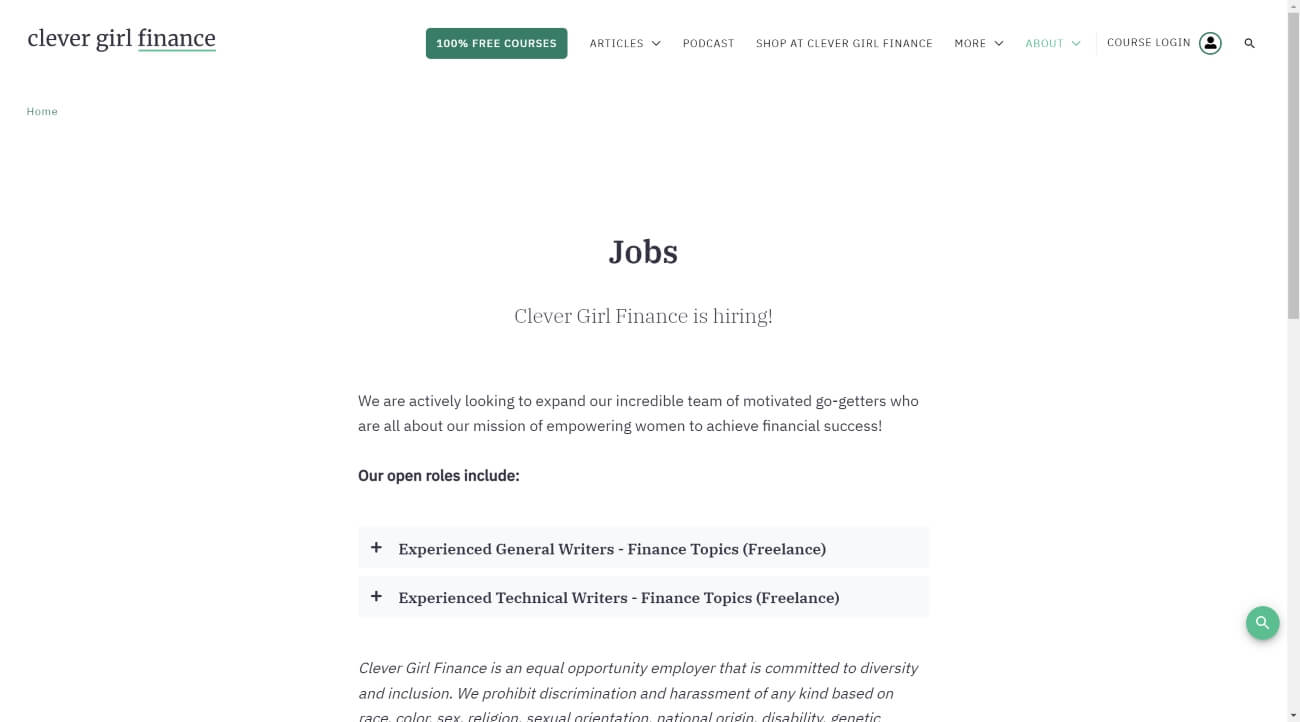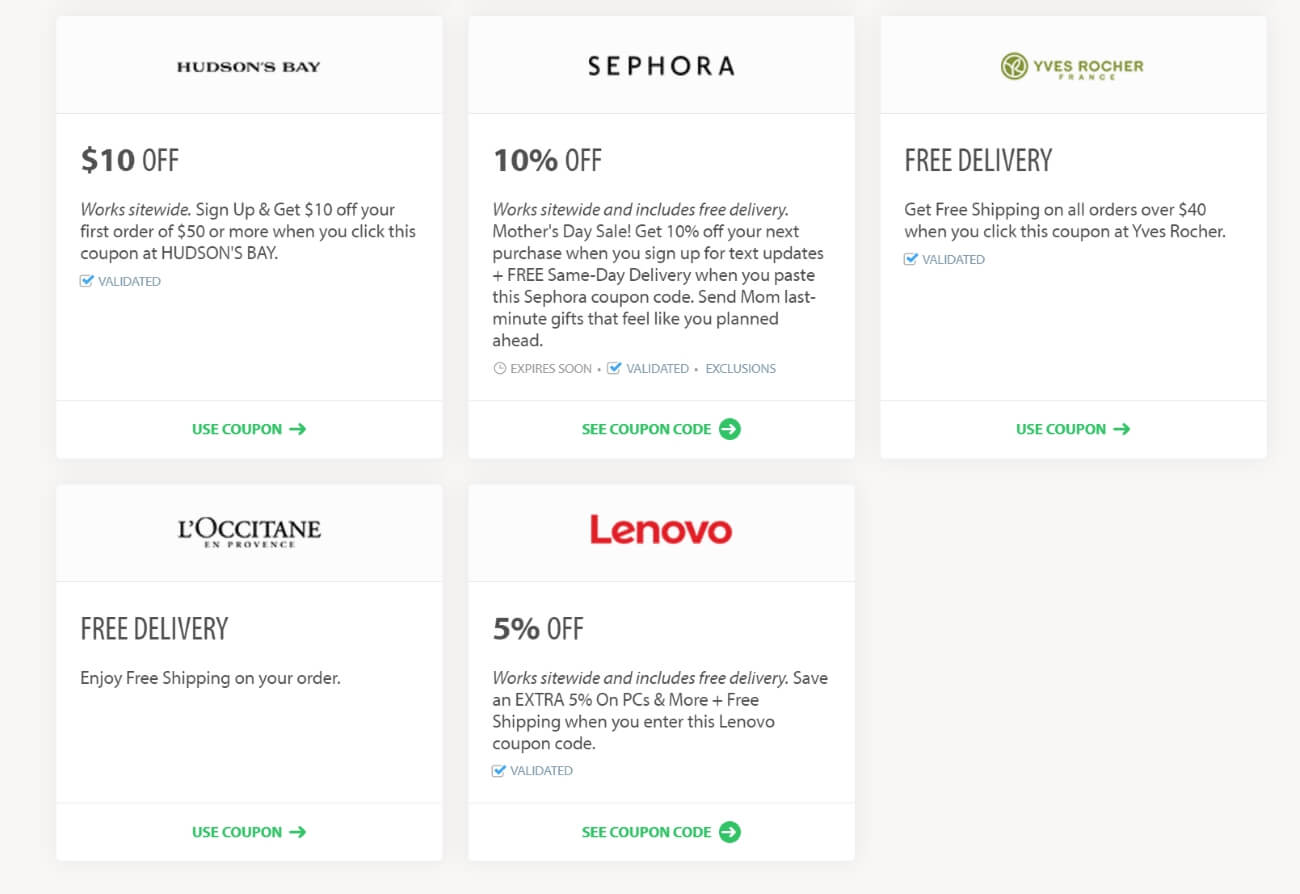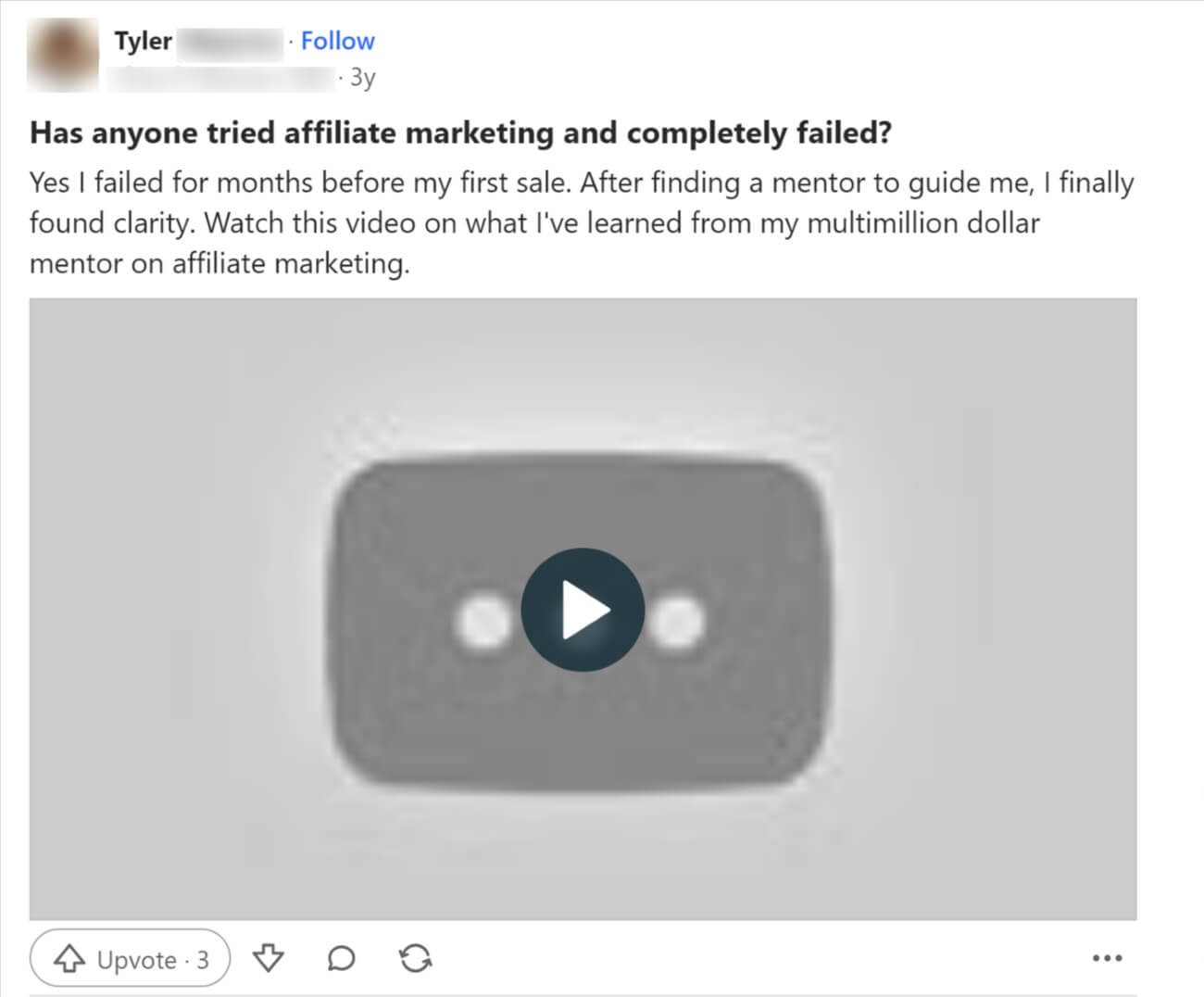7 Affiliate Marketing Mistakes to Avoid in 2024
Affiliate marketing is a relatively new industry, yet its history is already riddled with tons of affiliate marketing mistakes. Lucky us – we get to learn from them.
So you want to sip margaritas on the beach while your readers buy linked products on your blog, sending you that oh-so-coveted passive income.
We don’t blame you. Brands invested $9.1 billion in affiliate marketing efforts in 2022, which was 47% more than in 2018!
Getting in on the action should be easy, right?
We’ve got news for you: that misconception leads to the most common affiliate marketing mistakes. Insufficient audience research, blind link stuffing, and poor reporting are just a few missteps that can quickly tank your affiliate business.
Why?
Because successful affiliate marketers are far from passive.
This ever-changing industry requires your time, energy, and expertise. That is, if you actually want to see conversions and revenue.
Sure, we’ve seen tons of affiliate marketers bask in clicks, customers, and conversions. We’ve also seen affiliate blog income reports ranging from $1,000 to $100,000 in monthly revenue.
But the truth is that most affiliates crash land after failing to learn from their affiliate marketing mistakes.
New to the game? Don’t worry. The biggest mistakes in affiliate marketing have already been documented. And lucky for you, so have the solutions.
1. Not treating affiliate marketing as a business model
It’s easy to blur the line between work and a hobby, especially if your affiliate marketing channel is in a niche you’re passionate about.
But no matter your affiliate marketing type, you won’t see revenue if you treat your website like a passion project. One of the most common affiliate marketing mistakes we’ve seen is when people don’t treat it like what it is: a business.
Let’s say you’re really into surfing.
You start an influencer social media channel and partner up with a few surf brands to make some extra cash. But since you’re just starting out, you’re picking partnerships and products based on your interests and not your audience’s. Your content reads more like journal entries than helpful, engaging insights. And the worst part?
Since you haven’t identified what success looks like, Aka, your affiliate marketing website is a hobby, not a business. And your audience and subsequent revenue will act accordingly, even if that means hitting the road.
Jules Costa, money expert and Affilimate contributor, reminds us in our affiliate marketing guide that business is about data, not guesswork:
The most successful affiliate marketers treat their marketing as what it is – a business. Tracking allows for revenue optimization based on data-driven insights, rather than gut instinct or guessing.
So, what do you do with those data-driven insights? You start investing in what works.
2. Not investing in the business wisely
How hard is affiliate marketing for beginners? Much harder than it needs to be, if you’re not investing money into it wisely.
New affiliate marketers often waste their resources in two ways. First, they spend money on things that don’t bring them revenue. Second, they don’t spend enough money on the things that do.
We’ve all heard the phrase, “You have to spend money to make money.” Of course, this isn’t true in every scenario. But if you want to scale your affiliate business, you’ll likely need to invest in some support, either in tools, staff, or education.
If not?
You might experience:
- Stress and burnout from spreading yourself too thin
- Lost traffic from readers who flock to competitors who invested more wisely
- Slower revenue stemming from your limited industry knowledge
All three of these result in lost revenue in one way or another.
Let’s fix that. What are some ways you can invest in your affiliate business to keep the dough flowing? If you don’t have the time for certain tasks, outsource!
Maybe that looks like contracting professional logo creation and branding services, like on Clever Girl Finance’s website homepage:

You might even invest in an email marketing strategy to garner more traffic:


Or you could make the ultimate investment and hire some staff:

Now, how do we know all these tactics and investments are working for Clever Girl Finance? You could check out their profile on Similarweb, which shows nearly 600,000 monthly visits in January 2023, placing them in an income bracket of just under $1 million.
Of course, a beginner affiliate might not have the resources to hire professional services and staff right away. But that doesn’t mean they can’t invest in:
Automation and organization tools: Investments are solid if they save you time. Just ask Kat Smith, owner of the travel blog A Way Abroad, who loves project management software Airtable.
Airtable is my tool of choice for automation since it also serves as my content organization system.
And if you have staff? Affilimate’s Teams feature helps you include and train your staff on content processes, complete with custom permissions and task outsourcing.
Affiliate link management tools: Broken affiliate links are a drag, and so is all the time you’ll waste scouring your site to find them. Affilimate’s link management feature helps our clients spot dead links in real-time, along with revenue attribution for each link.
These tools are great at putting core business data at your fingertips. Once you get a taste for the numbers, you can avoid more common affiliate marketing mistakes by implementing a completely data-driven strategy.
3. Slacking on data and metrics
Running an affiliate marketing business without metrics is like baking a cake without the recipe – even a good guess will likely lead to collapse. Affilimate has helped tons of clients solve affiliate marketing challenges by shining a light on their data and helping them quantify progress with key performance indicators (KPIs).
Supply Clinic CEO Jacob Drucker tells Forbes that strong KPIs are “specific, measurable, and impactful to overall business goals.”
For most businesses, good KPIs may include the cost and revenue per client, as well as the client retention rate.
For affiliate marketing businesses, KPIs are:
- Revenue attribution for links: How much money each affiliate link brings you
- Average order value (AOV): How much customers spend on products on average
- Conversion rate (CVR): How often your web visitors complete an action (e.g., transaction, newsletter sign-up)
- Cost per affiliate sale (CPS): Cost of acquiring a conversion, specifically an affiliate transaction
If you have a high tolerance for busywork, you might be able to gather all that intel on your own by analyzing every affiliate link and crawling all web pages. But the right tool can help you automate the administrative tasks and get you back to what you do best: engaging with your audience.
Affilimate is the preferred tool for removing human error from affiliate marketing. Our affiliate dashboard aggregates your sales data, so you can check all your commissions and accompanying data from 100+ platforms in one place, at a glance.
And if you’ve never heard about SubID tracking, it’s about to become one of your favorite phrases. This feature gives each of your affiliate links a unique ID, so you can see clicks and revenue for each one. Plus, Affilimate’s heat maps show you how your audience interacts with your site.
These are just three of Affilimate’s numerous features meant to help you grow your affiliate business. See for yourself with a 15-day trial!
4. Not taking search engine guidelines seriously
Healthcare, finance, and “your money or your life” (YMYL) niches – we’re looking at you. There’s nothing Google hates more than a slacker when it comes to Expertise, Authoritativeness, and Trustworthiness (EAT). But these aren’t just ranking factors for organic traffic (aka clicks and conversions). Instead, these are indicators that show your audience respects you, trusts you, and wants to eat up your content.
If you ask Brendan Aw, business consultant and founder of brendanaw.com, affiliate marketers need to add an extra E – experience – to the mix:
When I first started affiliate marketing, I didn’t know a thing about Google’s E-E-A-T, much less trying to implement them.
My website's content lacked expertise and experience, and I did not establish myself as an authoritative source in my niche.
This caused him some problems when trying to rank on Google. The consequences? Low organic traffic, limited growth, and negative audience perception.
Here’s how he fixed it by following Google’s guidelines:
Expertise:
Initially, I covered topics about things I didn't really have expertise in. Many newbies tend to find random low-competition keywords and write those articles because they are easier to rank.
However, that doesn't show expertise. So, I shifted my focus to topics like marketing, Web3, and AI, which I have the credentials for.
Experience:
I used to write roundup articles or "Best-of" posts for products I had never used.
So now I flipped the switch and wrote in-depth detailed article reviews on top of those roundups to give my audience more confidence in purchasing based on my recommendations.
Authoritativeness:
As I was also covering random topics, I couldn't be taken seriously. I had no topical authority or recognition from others.
So I decided to focus on my niches and build backlinks from other relevant sites to give off positive signals to Google.
Trustworthiness:
The one pitfall many affiliate marketers make (including myself) is not treating this endeavor as a business.
This meant just writing articles but not giving Google signals that the website was legit.
So I asked myself, "What do real businesses have on their website?" This included an about page, a registered address, a contact page, and a phone number.
We’ve chatted a lot about Google, but remember: You have to balance search engine guidelines with your audience’s needs and interests. To do that, you’ll need a killer content plan that satisfies multiple search intents and your readers’ desire for useful, engaging insights.
Here are some content tips for meeting the needs of both Google and your audience:
- Create product review content with genuine accounts and reviews
- Offer freebies to your audience in exchange for contact forms and email addresses
- Publish user-generated content to foster engagement
- Study what works and doesn’t work for your competitors
- Conduct robust keyword research to catch audience interest
Need more content inspiration? Check out our roundup of stellar affiliate website examples.
5. Promoting too many products and affiliate link stuffing
Let’s say you have high monthly traffic numbers. You might think the more product links you include, the better a chance you have at converting those readers.
Icarus thought the same when he flew too close to the sun, but we all know how that turned out. Plugging every product link you can think of will melt your beeswax wings, too.
Just ask Evander Nelson, a certified personal trainer and owner of the fitness blog EvanderNelson.com:
When I first started in affiliate marketing, I promoted too many products at once. I couldn’t market each product well because I was stretched too thin.
Consequently, Nelson’s audience lost trust in him. Why? Because reaching for too many niches usually reduces your authority.
My brand was confusing because I promoted unrelated products.
Even worse:
My audience lost trust in me because I seemed too sales-y.
Here’s the thing: audience trust is easily lost in the affiliate marketing industry. You’re making a profit off the very product you’re reviewing, so it’s reasonable for readers to be skeptical. Multiply that risk by the volume of seemingly unrelated products and links. Who can blame readers for seeking more genuine content?
Nelson corrected his mistake with focused product placements that speak to his audience’s needs. Just look at these four speakers he showcases, with clear, unique selling points and features to make life easier for his audience:

So, how do you distinguish which affiliate links and products are the right fit for your content?
First, look at your engagement metrics to identify your audience’s interests. Once you have a solid idea about what kinds of products they’d buy, consider the commission rates you could make off those items. These days, affiliate marketers have tons of high-ticket affiliate programs to choose from, which can narrow down the choice between two products.
Isabella Biava, founder of Boundlessroads.com, offered us similar advice in our affiliate blogging guide. She cautioned against stuffing your content with too many links, and reiterated the importance of proper education and a data-driven strategy.
But having multiple links isn’t always bad. Showcasing competing products demonstrates objectivity on your part, and gives your readers more options to consider.
Coupons.ca offers tons of coupons for competing sites. Yves Rocher or L’Occitane?
If a reader doesn't like Yves Rocher for whatever reason, the site has a chance to convert them with L'Occitane.

6. Not investing in education
Poor or little subject education is a risk for both affiliates and brands. But that doesn’t mean it’s easy. Affiliate marketers need to study their niche, content marketing, SEO, sales, writing, and business management – as well as the ebb and flow of the rapidly changing affiliate marketing industry.
We’ve seen firsthand how much money affiliate marketers can make, especially with the right management tools and education. So naturally, tons of marketing experts (and wannabe experts) advertise affiliate marketing education all over the internet.
How is the curious affiliate marketer to judge which educators will provide genuine value? Many will offer empty promises, like this Facebook post:

Or this Quora thread...

Sound familiar? But here’s the thing: you’ve probably seen tons of other education ads that seem more legit, but they aren’t. Many self-declared experts regurgitate the same content found online and charge you a few thousand bucks for it.
One college student who goes by u/telkinmalawi on Reddit laments a fruitless investment in affiliate marketing education:
I tried a bunch of online courses like John Crestani’s, and another coaching program he referred to me. But this route is riddled with people who are only trying to make a quick buck off you instead of trying to help you solve the problem you’re having. I’ve lost over $2,000 falling for these schemes.
So, how do you invest in proper affiliate marketing education? The first order of business is to study your audience and niche. When you reach the more technical aspects of affiliate marketing, look at:
- Institutions: Reputable educational institutions in the marketing field are a great place to start learning about tactics like SEO, content writing, and affiliate marketing strategies. Think Hubspot and Brain Station. Research an educational body’s web presence and find out what alumni are saying about their offerings. You’ll catch bad reviews pretty quickly.
- People: If we had a dime for every so-called affiliate marketer promising revenue from their course…we’d be in Ibiza by now. Still, successful people in the affiliate marketing space can offer serious insights and tangible strategies for success. So how do you vet them? First, look at their affiliate marketing websites and profiles on Similarweb.com. Then ask yourself: do they have solid monthly web traffic? Revenue? If so, they might offer tips to help you follow suit in their courses. Look out for any negative reviews or guaranteed results that seem too good to be true.
That’s what affiliate marketers need to look out for. But brands also need to ensure their affiliates know exactly how to market their products. Allan Stolc, founder of loan broker site Bankly.dk, didn’t provide enough resources to his brand’s affiliate marketers, and it taught him a valuable lesson:
They were left to figure things out on their own, struggling with technical issues and a lack of information about our loan products.
As a result, they became frustrated and unmotivated, negatively affecting their productivity and overall performance.
Other affiliate marketing mistakes
These are the most obvious mistakes to keep in mind, but don’t hate us when we say the list doesn’t stop there. You’ll also want to beware of:
- Picking the wrong partners – either irrelevant to your audience or with non-lucrative terms for your affiliate business
- Lacking affiliate disclosure in your content
- Slacking on email marketing campaigns
- Minimal audience engagement
- Poor SEO
- Not distributing your content
Bottom line
Unfortunately, we’ve seen (and even made) tons of affiliate marketing mistakes while working in the biz. The good news is that those mistakes are now lessons you can learn from. The beauty of affiliate marketing lies in all the opportunities you have to drive revenue, even after making a few mistakes.
Remember: in affiliate marketing, mistakes and solutions share a common source, and that’s performance tracking. Affilimate helps you catch your mistakes and offers the data you need to figure out how to fix them. Whether it’s content analytics to show you what your readers care about and which web elements will drive revenue, or link aggregations to highlight your best-performing links – Affilimate helps you use data to anticipate problems, find solutions, and thrive in affiliate marketing.
Ready to put a data-driven affiliate marketing strategy in action? Claim your 15-day free trial and see for yourself how Affilimate can help you grow your business.

